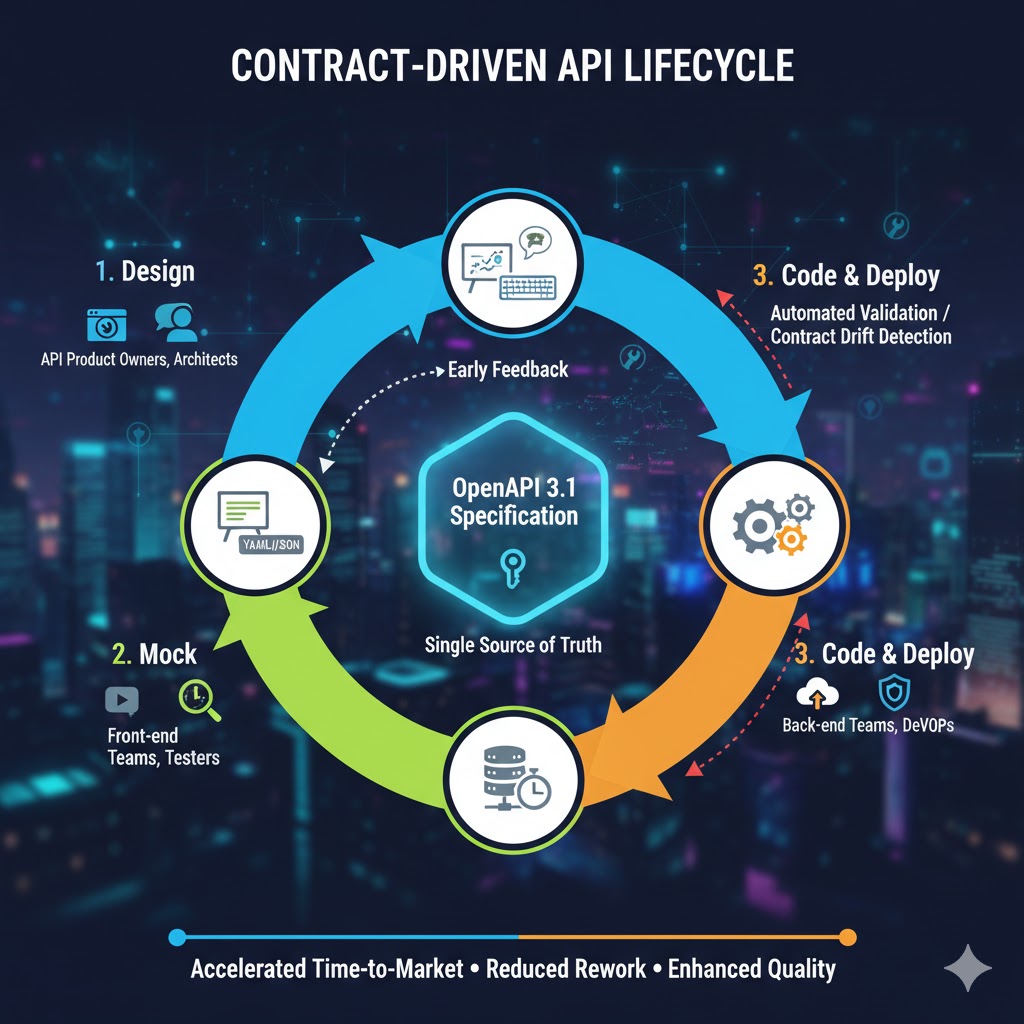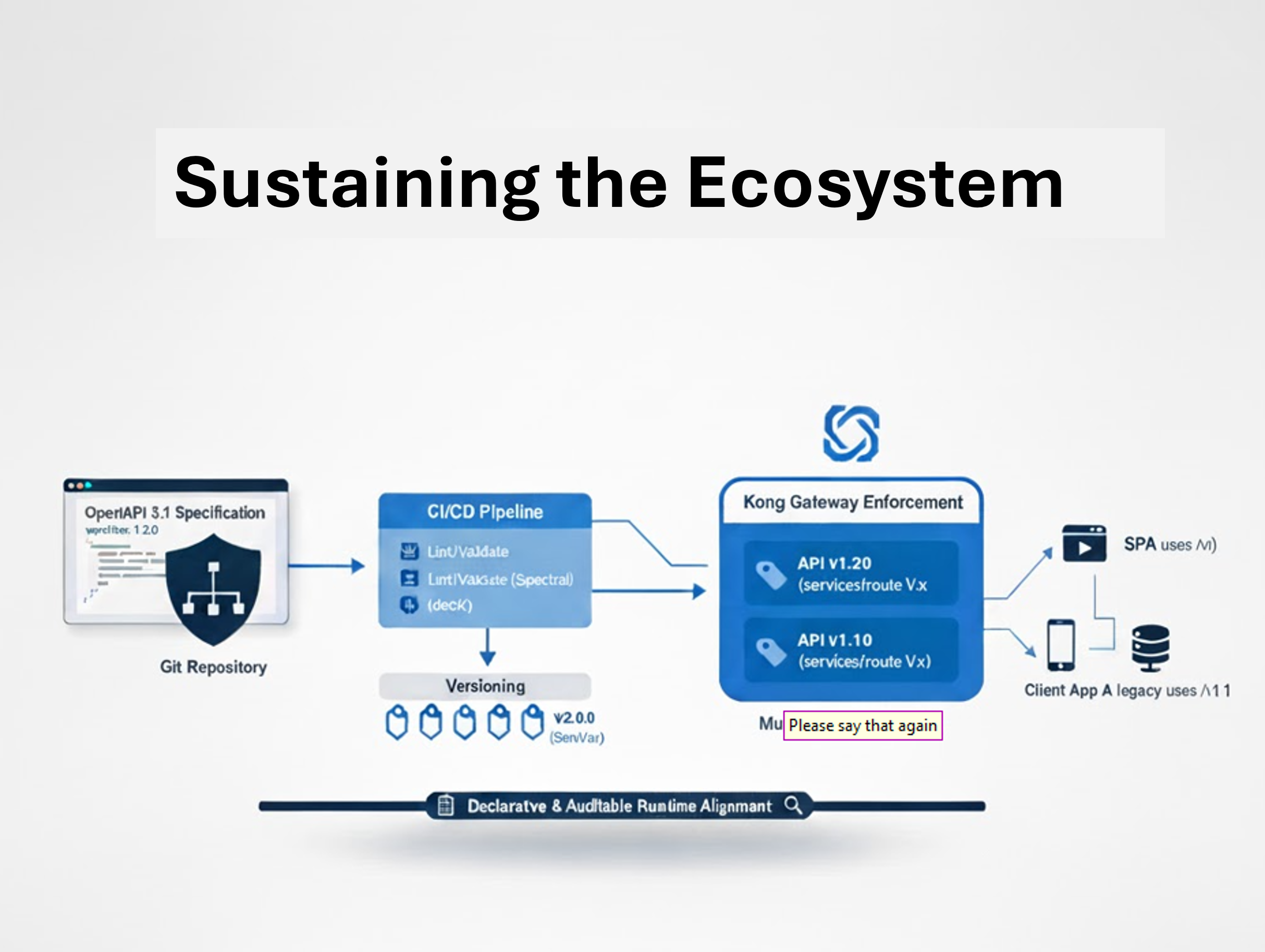✔ The Blueprint — Accelerating API Development with OpenAPI 3.1 👈
🔑 Executive Summary
In a world of distributed microservices, global teams, and continuous delivery, OpenAPI 3.1 has become the shared language that unites design, governance, and execution. Traditional API development too often suffers from communication gaps, delayed integrations, and costly rework. A contract-driven approach flips this script by treating the API specification as the single source of truth from day one.
This two-part Ea-2-Sa series introduces a proven “Design → Mock → Code” blueprint that transforms how teams create, test, and deploy APIs. Part 1 establishes the philosophy and structure; Part 2 will bring it to life through tools such as Kong Gateway, decK, and GitOps automation.
📘 The API Development Conundrum

🧩 OpenAPI 3.1: Your Blueprint Language
OpenAPI 3.1 isn’t merely documentation; it’s a machine-readable contract that defines endpoints, operations, parameters, request/response schemas, and authentication rules. With its alignment to JSON Schema 2020-12, teams gain reusable and verifiable data models across all microservices.
🚀 The “Design → Mock → Code” Workflow
1️⃣ Design — The Foundation of Your API
- Collaborate early: Bring designers, product owners, and engineers together to define behavior using OpenAPI 3.1.
- Schema precision: Build robust request/response definitions using JSON Schema 2020-12 for accuracy and reusability.
- Tooling: Create and lint specs visually in Stoplight Studio or SwaggerHub, enforcing consistency via Spectral rulesets.
The result is a validated OpenAPI 3.1 document — a living, shareable contract that guides every stage that follows.
2️⃣ Mock — Unlocking Parallel Development
- Parallel delivery: Spin up mock servers instantly using Stoplight Prism, SwaggerHub, or Postman.
- Early feedback: Allow frontend and mobile teams to integrate before backend code exists, surfacing usability issues early.
- Automation: Integrate mock generation and validation directly into CI/CD workflows for continuous feedback loops.
3️⃣ Code — Implementing with Confidence
- Clarity: Developers implement from an unambiguous spec, minimizing misinterpretation.
- Code generation: Use OpenAPI Generator or Swagger Codegen to scaffold controllers and models, while maintaining manual ownership of business logic.
- Continuous validation: Run contract tests using pytest-openapi-validator or Newman to confirm live endpoints match the specification.
🔄 Integration & Versioning: Sustaining the Ecosystem
Once APIs are operational, governance becomes vital. By syncing OpenAPI 3.1 specs with Kong Gateway via decK and storing configurations in Git, teams achieve declarative, auditable runtime alignment. Each spec change triggers CI/CD updates that automatically propagate to staging or production environments — the essence of GitOps.
Apply Semantic Versioning (SemVer) with Git tags to trace evolution, enabling multiple versions to coexist without disrupting existing consumers — a crucial capability in enterprise environments.
🏁 The Blueprint for Success
The contract-driven model powered by OpenAPI 3.1 represents a paradigm shift — from siloed development to collaborative acceleration. By unifying design, mocking, and implementation under a single source of truth, teams deliver APIs faster, reduce integration risks, and achieve predictable outcomes.
This foundation also primes APIs for governance and runtime automation under Kong Gateway, setting the stage for the next phase of maturity — Policy-as-Code for APIs. In Part 2, we’ll demonstrate this blueprint in action using Kong Gateway, decK, and GitOps pipelines.
